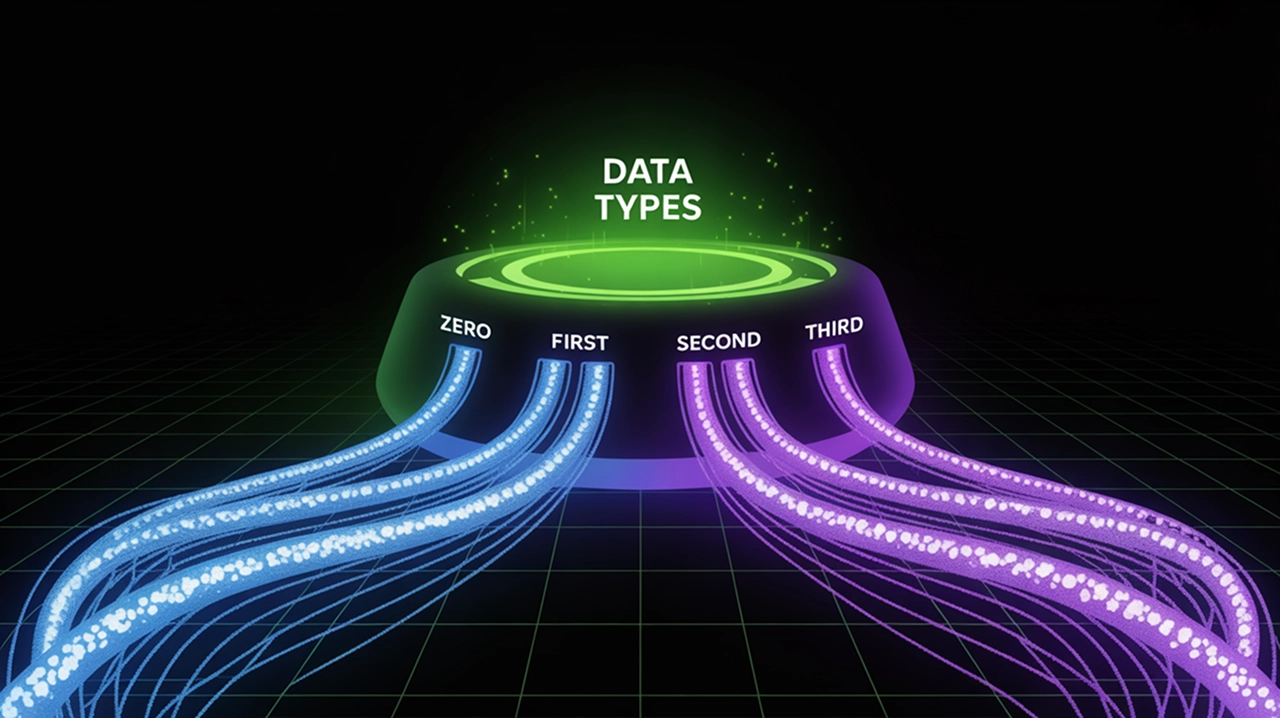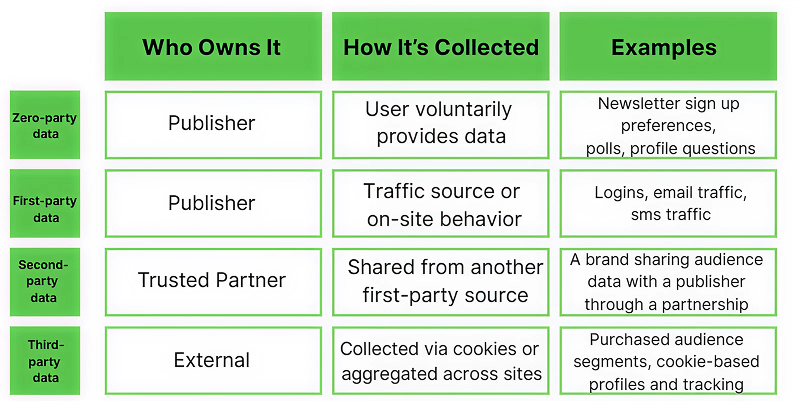Zero, First, Second, and Third-Party Data Explained: Why First-Party Data Wins

As cookies fade and privacy rules tighten, publishers are rethinking how they collect and use audience data.
Terms like zero-party, second-party, and first-party data often get thrown around, but there are clear distinctions in how each is collected and shared. Even further, one crucial question always comes up in digital publishing: which data type drives the most ad revenue?
In this post, we’ll explore the four “data parties,” how they apply to digital publishing and ad auctions, and why first-party data is the key to sustainable monetization.
Understanding the Four Data Types
Zero-Party Data: The User’s Gift
Coined by Forrester in 2018, zero-party data refers to information that users intentionally share like newsletter preferences, quiz answers, or custom settings. It’s highly trustworthy because it reflects real intent.
While it’s rarely sent into ad auctions, zero-party data enhances first-party profiles and improves personalization that indirectly lifts ad performance. Think of it as a high-trust subset of first-party data.
First-Party Data: The Publisher’s Powerhouse
First-party data is collected directly from your site or app like login identifiers, email/sms traffic and subscriber info. It can be safely shared in ad auctions through identity solutions like ezID, allowing advertisers to recognize verified audiences and bid higher.
Second-Party Data: A Trusted Exchange
Second-party data is another company’s first-party data, shared through a direct partnership (e.g., a hotel sharing booking data with an airline). It’s more reliable than third-party sources but requires active relationships and doesn’t scale easily. That’s why most publishers still prioritize building their own first-party foundation.
Third-Party Data: The Old Standard, Now Fading
Third-party data is collected by aggregators through cookies or tracking pixels across the web. It once powered large-scale audience targeting, but with privacy regulations (GDPR, CCPA) and cookie deprecation, it’s losing both reliability and availability. Advertisers are now shifting focus and budgets to first-party data.

How Each Data Type Plays in Ad Auctions
In programmatic advertising, data determines how much advertisers are willing to bid for an impression.
- First-party data (like logins or behavioral profiles) can be securely passed into the bidstream, giving DSPs such as The Trade Desk the deterministic signals to confidently identify users and bid higher.
- Zero-party data enhances those profiles, for example, a user stating they “love sports” strengthens audience segmentation.
- Second- and third-party data are often aggregated, delayed, and less reliable.
Zero vs. First-Party Data: It Takes Two to Tango
Zero- and first-party data often overlap. The key difference is that zero-party is explicitly provided versus first-party is inferred from behavior (Shopify). Used together, they give publishers and advertisers a more complete view of user interests.
This combination improves ad targeting and reduces wasted ad spend. In fact, 47% of consumers say they’ll share data if the value exchange and purpose are clear.
Still, zero-party data can’t scale easily as it requires consent and direct sharing, which not all users will or want to do. That’s why first-party data remains the backbone of scalable monetization.
Conclusion: Why First-Party Data Wins for Publishers
Among the four types, first-party data stands out for reliability, scalability, and control. It gives publishers ownership over audience insights while helping advertisers target accurately without the need for third-party systems.
Zero-party adds depth, and second-party partnerships can extend reach, but only first-party data delivers consistent, scalable revenue while maintaining trust and compliance.
With high-quality identity solutions like ezID, publishers don’t just collect data but they activate it. ezID turns every visit into a privacy-safe identity signal that advertisers recognize and bid a premium on, boosting CPMs, fill rates, and long-term site value.


